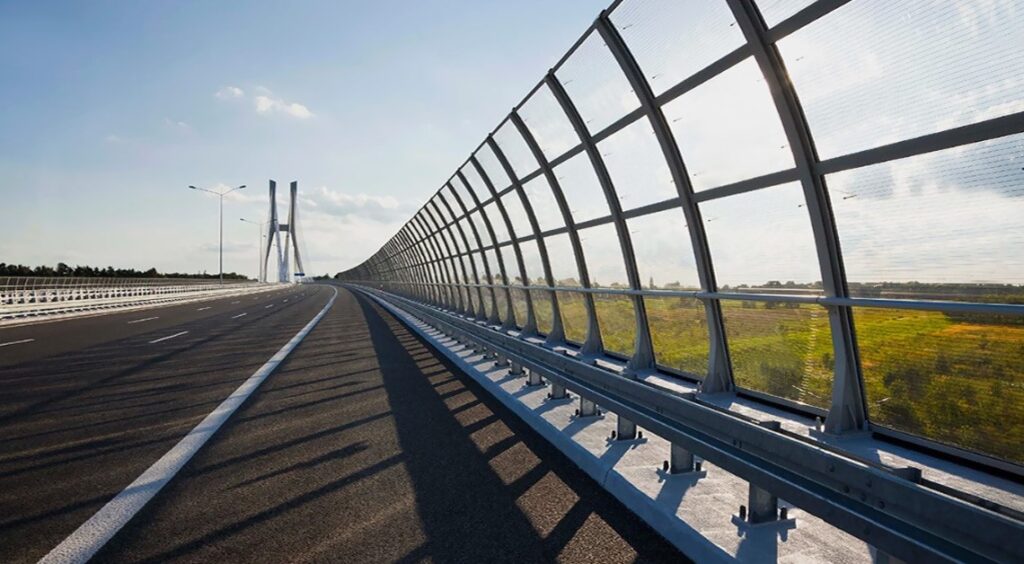Are Noise Barrier Sheets Just a Marketing Gimmick? What the Research Says

If you’ve ever worked in an industrial setting, lived near a construction site, or driven past a highway lined with noise barriers, you’ve likely wondered: do these noise-blocking solutions work, or are they just another marketing ploy? Noise pollution is a growing concern in urban and industrial areas, affecting both workers and residents.
Many companies and governments invest in noise barrier sheets to mitigate sound disturbances, but how effective are they really?
The Science Behind Noise Barrier Sheets
We need to understand how they work before we dismiss or embrace noise barrier sheets. These sheets are specifically engineered to absorb, reflect, or block sound waves, reducing the transmission of noise from one area to another.
Unlike traditional insulation, which is designed for temperature control, noise barriers focus on disrupting sound energy.
Absorption vs. Reflection: The Two Types of Noise Control
- Absorptive Barriers. These are made from porous materials such as mineral wool, foam, or fibreglass, which trap and dissipate sound energy, preventing echoes and reducing overall noise levels.
- Reflective Barriers. These use dense, solid materials like mass-loaded vinyl (MLV), metal composites, or concrete to bounce sound waves back towards the source, preventing them from passing through.
Most industrial noise barrier sheets incorporate both properties to maximise effectiveness. However, their success depends on material density, installation quality, and environmental conditions.
Noise Barrier Sheets in Industrial and External Applications
Noise barriers are most commonly used in external environments and industrial settings where high noise levels pose risks to health and productivity.
Here are some of the most common applications:
1. Highways and Roadside Noise Barriers
Heavy traffic is a major source of noise pollution, with sound levels often exceeding safe limits for nearby residents. Governments and urban planners install large noise barrier sheets along highways to reduce traffic noise.
Studies indicate that well-designed barriers can lower noise levels by 10 to 30 decibels, significantly reducing auditory stress for those living nearby.
2. Construction Sites
Construction work generates excessive noise from machinery, drills, and heavy equipment. Noise barriers are often installed around construction sites to shield nearby businesses and residential areas from disruptive sounds.
Some advanced barriers even include absorptive panels that minimise echoing in urban environments, making them more effective than traditional plywood fencing.
3. Industrial Facilities
Factories, power plants, and other industrial facilities generate high levels of continuous noise, which can be hazardous to workers’ hearing and disruptive to surrounding communities.
Industrial-grade noise barriers, often made from dense composite materials, help contain sound within the facility, improving workplace safety and ensuring compliance with noise pollution regulations.
4. Airports and Railways
Airports and railway stations are among the noisiest places, with sound levels often exceeding 100 decibels. To mitigate this, authorities install large-scale noise barrier sheets made from high-mass materials.
These barriers are designed to absorb and deflect sound waves from aircraft engines and high-speed trains, reducing the impact on nearby residential areas.
What the Research Says
Numerous studies have evaluated the effectiveness of noise barrier sheets in these industrial and external applications. Here’s what the research confirms:
- Noise barriers reduce sound transmission by 10 to 30 decibels, depending on material type and installation quality. A 10-decibel reduction makes heavy traffic sound as quiet as normal conversation, while a 30-decibel reduction can make an industrial site sound more like a suburban area.
Material matters. High-density options like mass-loaded vinyl (MLV) and composite metal barriers outperform thin or lightweight materials in blocking low-frequency noise such as engines and heavy machinery. - Height and placement impact effectiveness. Taller barriers provide a better noise reduction effect by obstructing more sound waves, while incorrect placement can lead to sound reflections that reduce their efficiency.
- Environmental factors play a role. Wind, humidity, and surrounding structures affect how sound travels and how well barriers perform.
Marketing Gimmick or Worthwhile Investment?
While some manufacturers may exaggerate their product claims, noise barrier sheets are backed by scientific research and real-world applications. However, their effectiveness depends on various factors, including material choice, installation precision, and environmental conditions.
When They Work Well
- Ideal for reducing noise from highways, airports, railways, and construction sites.
- Used in conjunction with other soundproofing methods like enclosures, berms, and vegetation barriers.
- Properly installed, ensuring full coverage with no gaps or weak points.
When They Might Disappoint
- If expected to eliminate all noise, no barrier can provide absolute silence.
- When used incorrectly, such as in open environments without proper coverage.
- If made from low-quality materials that fail to block or absorb sound effectively.
The Verdict
Noise barrier sheets are not just a marketing gimmick, they are a proven solution for mitigating external and industrial noise pollution. While they are not a one-size-fits-all fix, they offer substantial noise reduction benefits when used appropriately and installed correctly.
If you’re an urban planner, construction manager, or industrial facility operator, investing in the right noise barrier system can make a significant difference in controlling unwanted sound.
So, the next time you see a noise barrier along a highway or construction site, rest assured, it’s not just for show. The science backs it up!






